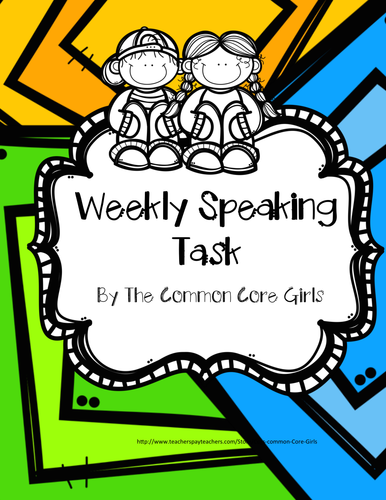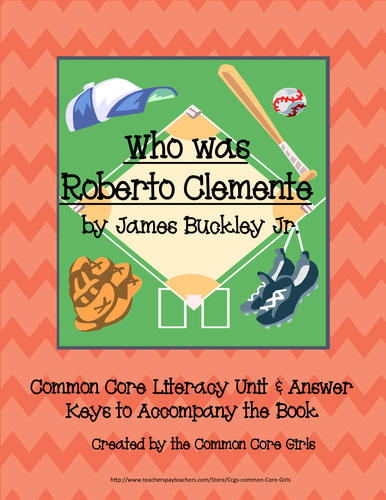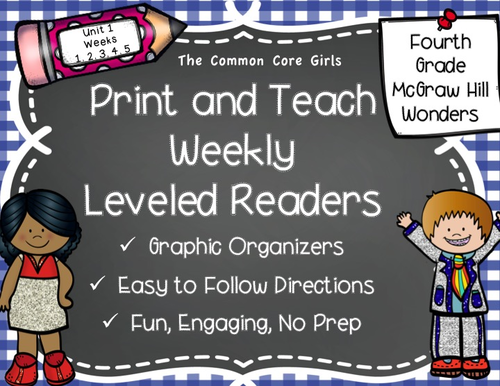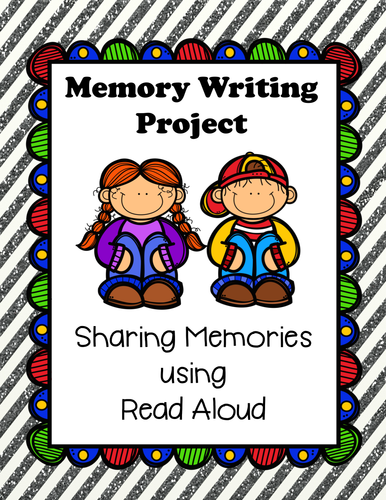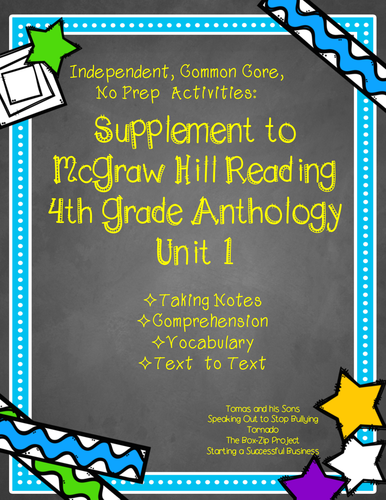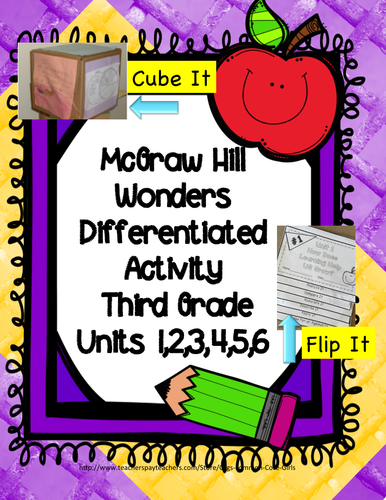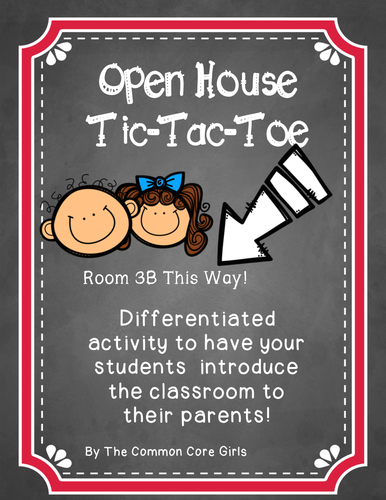
14Uploads
8k+Views
112Downloads
English

Comprehension Questions/Literacy Activities: Who Was King Tut? No Prep
This unit is meant to be used with the book Who Was King Tut? By Roberta Edwards. It is part of a series of books published by Grosset & Dunlap, a division of Penguin Group Inc. The Scholastic book order club often has these books and that is a great way to get free books using your bonus points.
The students love these books as they are simple but filled with tons of information and fascinating facts about different people in past history and current. Suggested age range: 8-12. Suggested grade level: 3rd-7th.
We purchase enough copies so students are paired with literacy partners and can read the chapters and work on the activity pages together. This is also a great reading group product or students can work on this independently.
Included in this product:
Common Core Standards
Comprehension questions for each chapter
Answer keys
Vocabulary Activity, also page with page numbers listed for differentiation
True/False Activity
Steps in Making Papyrus
Tomb Item Activity
Message in Hieroglyphs Activity
Map of the Pyramids Activity
Message in Hieroglyphs Activity
Matching Gods and Goddesses
Main Idea/Details: You can decide to use the main idea/detail paper for several chapters as you please since this activity is open ended.
3, 2, 1 Activity
Black and White Cover page for student booklet
Activities with frames and without frames

Comprehension Questions/Literacy: What Is the Declaration of Independence? No Prep
This book study is meant to be used with What is the Declaration of Independence? By Michael C. Harris. It is part of a series of books published by Grosset & Dunlap, a division of Penguin Group Inc. The Scholastic book order club often has these books and that is a great way to get free books using your bonus points.
The students love these books as they are simple but filled with tons of information and fascinating facts about different people in history and current.
We partner our students to share a book and work together to complete the activities. You can also use this product as a literacy center. It would also work great as an independent project to challenge your higher students, or in a guided reading group.
Included:
Common Core Standards
Answer keys
Comprehension questions for each chapter
Student centered questions to activate background knowledge
Main Idea/Details: You can decide to use the main idea/detail paper for several chapters as you please since this activity is open ended.
Cause/Effect
Summarizing
Haiku/Cinquain Poem: Teacher directions, student starter activity, draft page
Vocabulary Activity, also page with page numbers listed for differentiation
KWL
Primary Source Activity
Timeline
Writing- Critical Thinking
Black and White Cover page for student booklet
Activities with frames and without frames
Suggested Age Range: 8 - 12 years
Suggested Grade Level: 3 - 7

Comprehension Questions/Literacy Activities: What Was the Great Depression?
This book study is meant to be used with What was the Great Depression? By Janet B. Pascal. It is part of a series of books published by Grosset & Dunlap, a division of Penguin Group Inc. The Scholastic book order club often has these books and that is a great way to get free books using your bonus points.
The students love these books as they are simple but filled with tons of information and fascinating facts about different people in past history and current. Suggested age group: 7-12 Grade level: 3-7
We partner our students to share a book and work together to complete the activities. You can also use this product as a literacy center. It would also work great as an independent project to challenge your higher students, or in a guided reading group.
***********************************************************
This product includes:
Common Core Standards
Answer keys
Student activity for each chapter
Student centered questions to activate background knowledge
Main Idea/Details: You can decide to use the main idea/detail paper for several chapters as you please since this activity is open ended.
Cause/Effect
Summarizing
Haiku/Cinquain Poem: Teacher directions, student starter activity, draft page
Vocabulary Activity, also page with page numbers listed for differentiation
Fill in a table
Primary Source Activity
Timeline
Writing- Critical Thinking
Black and White Cover page for student booklet
Activities with frames and without frames

Speaking Task-Year Long Set of Weekly Prompts-Gr 2-5
This unit is used starting in September and lasts all year long. Each student is assigned a day of the week. The first week of the month is a show and tell. The second week changes topics each month. The third week students give a book talk and the fourth week is poetry reading. Included in this product is a parent letter to explain the task and a sheet to send home for the second week of the month as this is the week that changes. The Common Core Standards are listed for speaking and listening.

Guided Reading: Who was Roberto Clemente- Common Core, No Prep, Printables
This unit is meant to be used with the book Who Was Roberto Clemente? by James Buckley Jr… It is part of a series of books published by Grosset and Dunlap a division of Penguin Group Inc. The students love these books as they are simple but filled with tons of information and fascinating facts about different people in past history and current. We will be writing more activity guides for other books in this series so please follow us to be updated on when these units become available.
We purchase enough copies so students are paired with literacy partners and can read the chapters and work on the activity pages together. This can also be used as a guided reading group or independent project. Besides a page with comprehension questions for each chapter (and answer sheets), this unit includes additional optional pages: a compare/contrast, main idea/details, timeline, newspaper writing activity, noting facts, a trading card activity, a ‘who do you admire’ writing, and notable accomplishments of Roberto Clemente.
You can decide to use the main idea/detail paper for several chapters as you please since this sheet is an open ended one. If you want students to summarize the chapter or even one of the “special informational pages” in the book (Spring Training, Baseball Cards) they can fill out the main idea/detail page and then use another sheet to write the paragraph.
Suggested Interest/Grade Level:
Ages 8-12
Grade Level: 3rd-7th

Comprehension Questions/Literacy Activities: What Was the Boston Tea Party?
This book study is meant to be used with What Was the Boston Tea Party? By Kathleen Krull. The Scholastic book order club often has these books and that is a great way to get free books using your bonus points.
The students love these books as they are simple but filled with tons of information and fascinating facts about different people in past history and current. Suggested age range: 8-12. Suggested grade level: 3rd-7th.
We partner our students to share a book and work together to complete the activities. You can also use this product as a literacy center. It would also work great as an independent project to challenge your higher students, or in a guided reading group.
This product includes:
Student activity for each chapter
Answer keys
Student centered questions to activate background knowledge
Main Idea/Details: You can decide to use the main idea/detail paper for several chapters as you please since this activity is open ended.
Drawing page of the American Colonies
Haiku/Cinquain Poem: Teacher directions, student starter activity, draft page
Vocabulary Activity, also page with page numbers listed for differentiation
Comprehension questions
Primary Source Activity
Time Line
Writing: Listing facts, summary
Black and White Cover page for student booklet
Activities with frames and without frames
Common Core Standards

McGraw Hill Wonders 4th Grade Unit 1 Print and Teach Leveled Readers
We created Print and Teach as a way for all staff in our school to successfully teach the weekly Leveled Readers. This product helps students to independently think and respond to all weekly questions. All activities follow the questions and note taking activity in each Leveled Reader. The vocabulary activity has several open ended activities for students to learn or review the weekly words. Students also illustrate the answer to the Essential Question found on the title page, which makes a great cover page for the weekly activities.

Christmas Memory: Narrative Writing Project- Scaffolded, Easy Prep, Printables
This step by step unit uses read aloud to develop ideas and the structure of narrative writing. Worksheets are provided to accompany each read aloud-allowing students to gather ideas. Students choose a memory for their final writing project to share and celebrate.
Memoir writing: The exploration of a memory, moments that will be cherished and passed down to family members.
Who Am I? What has made me who I am?
As we write, we discover what we think, what we know, what we care about, who we are.
Gathering Ideas
“In order to come up with a single great idea, we need to come up with a lot of lesser ideas.” Perdlta Finn
Memoir is not just writing about what happened to us or what we did. It is also about what we have noticed, heard, felt, and tasted.
I explain to the students that they will be writing about their special memories during this unit. We will begin by reading some stories to spark ideas that we might want to write about.
To gather ideas, I begin with a mini-lesson each day. I read aloud a book and then allow students time to write using the structure of the read aloud. I have included several books and ideas that I use in my classroom.
During this gathering phase, share your stories and memories. Model writing your thoughts on the worksheets.
They help each other come up with ideas and share their work at the end of each day.
Titles:
Wilford Gordon McDonald Partridge
When I Was Young In The Mountains
I Go with My Family to Grandma’s
The Relatives Came
Bringing the Farmhouse Home
18 other titles are included to differentiate or expand this unit to meet students’ needs.
*****************************************************************************
Included in this 33 page unit:
• Note to Teachers
• Mini Lessons
• Choosing a memory for a final project
• Rough Draft, Final and Sharing Information
• Read Aloud Books: Titles and Authors
• Illustration Paper
• Border Paper
• Student Booklets Contain
- Parent Letter
-General Directions
- Required Activities
- Grade Sheet
-Worksheet 1
-Worksheet 2
-Worksheet 3
-Worksheet 4
-Shaping the Memory

McGraw Hill Wonders 4th Gr. Anthology Unit 1 No Prep, Note Taking w/Questions
This Common Core close read, note taking, comprehension, vocabulary activity is meant to be used with the Literature Anthology Compare Text Story.
We created this to provide students with independent reading practice at the end of each week. McGraw Hill is teacher dependent most of the week. This allows students to read independently. This activity works well with a partner read too. Students discuss the story as they are completing the Note Taking graphic organizer and the Close Read questions.
Teachers can use this as an assessment, independent comprehension and vocabulary check for the week, guided group to further develop comprehension, or a substitute lesson.

McGraw Hill Wonders 3rd Grade: Units 1,2,3,4,5,6 Differentiated Cubing/Flipbook Activity
Common Core Girls present a reading literature cubing activity that uses Bloom's Taxonomy. We have added a printable flipbook so teachers can choose to have students complete this activity using a box or a printable flipbook.
Cubing is a technique for considering a subject from six points of view. Students work with a partner or independently to read two stories of their choice and to complete six questions or statements that require students to Describe it, Compare it, Associate it, Analyze it, Apply it and Argue for or against it. It works when we are “stuck” or locked into one particular way of thinking. Cubing allows students to look at units 1, 2, 3, 4, 5 and 6 from a variety of angles and to develop a multidimensional perspective.
***************************************************************************
How can you use it?
This project can be used as a culminating project after teaching each unit. Students are in control of their learning because they can choose any story from the unit to complete the project. They also choose a second story to compare and contrast ideas. Active reading and increased cognitive demand makes this project unique.
***************************************************************************
What’s Included
1. Teacher directions
2. Teacher's Poster to teach students how to find the author's message
3. Note Taking printable to help students guide their thinking for the author's message
4. Printables to help students respond to the statements or questions neatly
5. Student directions with colored paper suggestions or without so the teacher or student can choose their own color paper
6. Visual of a final project
7. Inexpensive resource to purchase the boxes for the project- 29 cents a box
8. A printable flipbook with covers for each unit.
***************************************************************************
This project requires student to think and read. Students need to express their ideas concisely and communicate ideas efficiently.
After completing the cube or flipbook, students can communicate with classmates by rolling their cubes and sharing ideas or sharing ideas in their flipbooks.

McGraw Hill Wonders 3rd Grade Unit 1 Print and Teach Leveled Readers
We created Print and Teach as a way for all staff in our school to successfully teach the weekly Leveled Readers. This product helps students to independently think and respond to all weekly questions. All activities follow the questions and note taking activity in each Leveled Reader. The vocabulary activity has several open ended activities for students to learn or review the weekly words. Students also illustrate the answer to the Essential Question found on the title page, which makes a great cover page for the weekly activities.
Students complete 6 activities each week.
1. Vocabulary: Directed by the teacher, students can write definitions, synonyms, antonyms, use the word in a sentence, or illustrate the word. Teachers can also use their own vocabulary ideas.
Included is an ELL vocabulary activity. The teacher or students can add additional vocabulary words.
2. Note Taking to Practice the Comprehension Skill of the Week: Students Summarize the Selection by Taking Notes. There is a “sticky note” reminder of the comprehension skill to help students review the skill.
3. Comprehension Questions: Students Respond to Reading answering comprehension questions for the story. Students are required to Identify and Cite Text Evidence.
4. Illustrate about Reading: Students are asked to illustrate a response to the Essential Question. This activity is used as the cover page and has a place for the student’s name and date. Teachers may write the question on the lines provided before making copies or students can copy the question on the lines.
5. and 6. Analytical Writing: After reading the paired text, students answer the Essential Question and Text to Text question. Students are required to cite text evidence from both texts to support their responses. Teachers may write the question on the lines provided before making copies or students can copy the question on the lines. Each week we focus on R.A.C.E.- Students Restate the question, Answer the question, Cite evidence from the text and Explain how the evidence supports their answer.
Teachers can use all the weekly activities or choose the activities to use for the week. Copy and staple and it is ready to use. Teachers or assistants can use this to teach a leveled reading group, independent work, substitute plans or as a literacy center.
The Essential Question and Text to Text printable includes the story titles and the level of the reader. On each page the unit number and week number helps keep the teacher and student organized.
Also Included: a printable to use with Analytical Writing which is found in the Leveled Reader Lesson Cards. Some weeks we prefer those questions instead of the questions in the Leveled Readers.
Included in this download is a slide used for the cover page of this product and the Print and Teach Product.

Open House Tic-Tac-Toe
Use this tic-tac-toe format to have your students introduce the classroom to their parents during open house.
The students love taking their parents around the room working to get a blackout on the Tic Tac Toe Board. It demonstrates true ownership in their environment.
There is a pdf file and a editable Tic Tac Toe Board so you can create your own squares that coincide with your classroom environment.




